Table of Contents
Coordinating Conjunctions connect words, phrases, or clauses of equal importance, creating smoother sentences. The seven key conjunctions are for, and, nor, but, or, yet, and so (FANBOYS). They show relationships like addition, contrast, or choice. For example, in Ali likes apples and oranges, and joins two nouns, making the sentence clearer and more connected.
The most common coordinating conjunctions are FANBOYS:
- For
- And
- Nor
- But
- Or
- Yet
- So
Functions of Coordinating Conjunctions
1. Combining Words
Coordinating conjunctions join words of the same type (nouns, verbs, adjectives) to make sentences clearer.
- She likes coffee and tea.
- The room was clean but small.
2. Connecting Phrases
They link phrases (groups of words) for smoother sentences.
- He went to the store and bought groceries.
- She wants to visit the museum or spend the day at home.
3. Joining Independent Clauses
They connect independent clauses to form a compound sentence (use a comma before the conjunction).
- I wanted to go to the park, but it started raining.
- He studied all night, so he passed the exam.
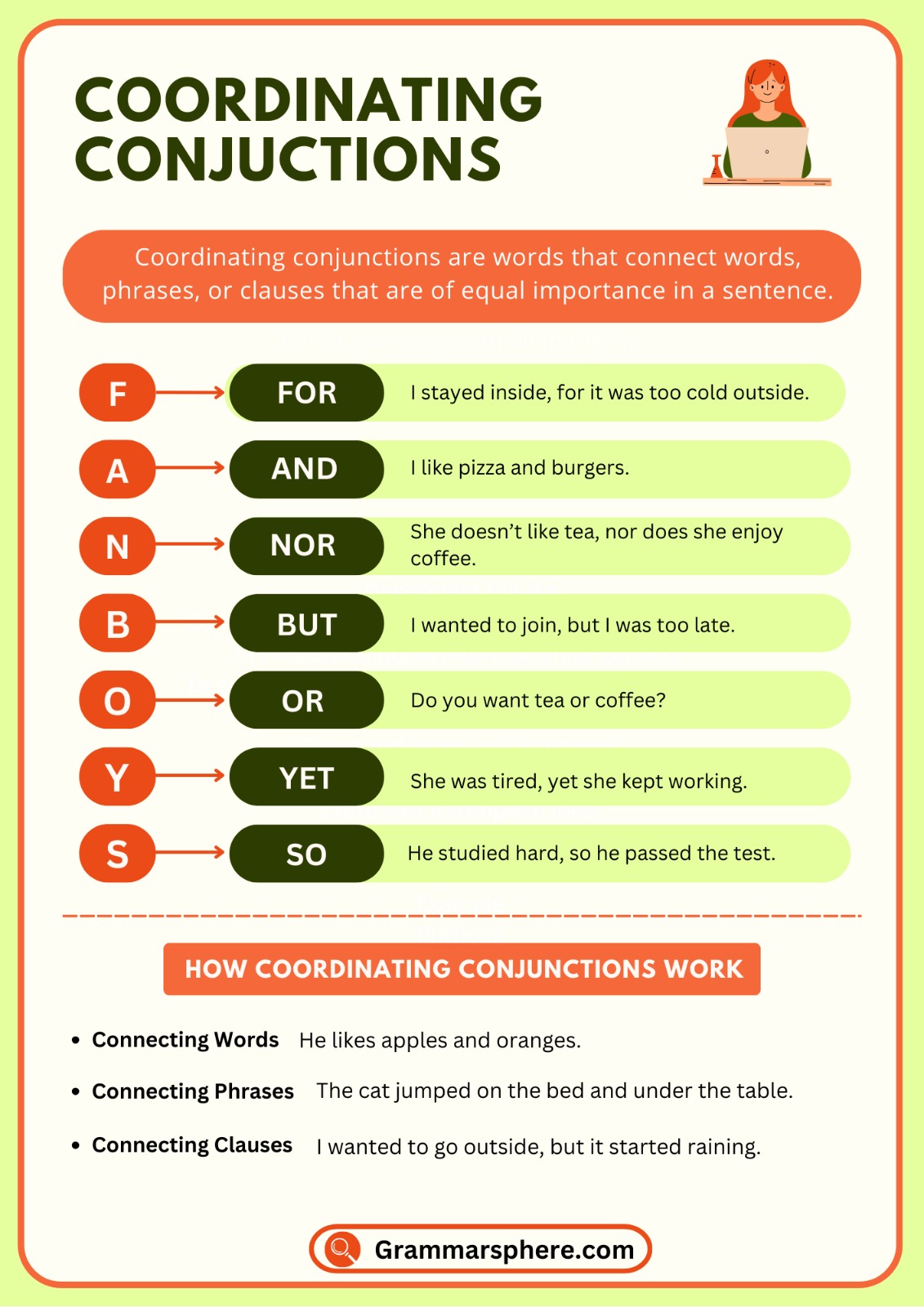
Coordinating Conjunctions to Join Phrases
Coordinating conjunctions join phrases to make sentences organized and smooth. The phrases must be of the same type, like noun phrases or verb phrases.
- She enjoys reading books and going for walks. (Joins verb phrases)
- They were planning a trip to the mountains or relaxing at home. (Joins verb phrases)
How Coordinating Conjunctions Join Single Words
Coordinating conjunctions connect nouns, adjectives, and verbs, showing addition, contrast, or choice.
1. Joining Nouns
- Ali enjoys tea and coffee. (Addition)
- She likes neither cats nor dogs. (Negative choice)
- Would you prefer rice or bread? (Choice)
2. Joining Adjectives
- The weather is cold but sunny. (Contrast)
- He is both intelligent and hardworking. (Addition)
- The story was boring yet emotional. (Unexpected combination)
3. Joining Verbs
- They sing and dance during celebrations. (Addition)
- You must study or fail the exam. (Choice)
- He tried to help her but failed. (Contrast)
Rules for Using Coordinating Conjunctions
Coordinating conjunctions join words, phrases, or clauses, but they must be used correctly for clarity and proper grammar.
1. Join Similar Sentence Elements
Connect only same-type elements (nouns, verbs, or clauses).
- He likes apples and oranges. (Joins nouns)
- She sings beautifully and dances gracefully. (Joins verbs)
2. Use a Comma for Independent Clauses
Add a comma before the conjunction when joining two independent clauses.
- I wanted to go outside, but it started raining.
- She studied all night, so she passed the test.
3. Avoid Starting Sentences with Coordinating Conjunctions
Formal writing avoids starting sentences with and, but, or so.
- Informal: And they went home.
- Formal: They went home instead.
4. Do Not Overuse Coordinating Conjunctions
Too many conjunctions make sentences wordy.
- Overuse: I like tea, and coffee, and juice, and milk.
- Correct: I like tea, coffee, juice, and milk.
Can Sentences Start with Coordinating Conjunction?
Yes, sentences can start with coordinating conjunctions like and, but, or, so, yet, etc., but this should be done with care and only when it adds clarity or emphasis to your writing. While it’s traditionally discouraged in formal grammar, it is widely accepted in modern, conversational, and creative writing.
When to Start a Sentence with a Coordinating Conjunction
1. For Emphasis or Flow
Starting a sentence with a coordinating conjunction can make your writing more engaging by emphasizing a point or creating a smooth connection between ideas.
- I was very tired. But I still finished my homework.
- She wanted to leave early. So she completed her tasks quickly.
2. Avoiding Repetition
Beginning with a coordinating conjunction can prevent overly long or complex sentences. This makes your writing clearer.
- The exam was tough. And the questions were tricky.
When Not to Start a Sentence
1. Formal Writing
In formal essays or academic papers, starting with a coordinating conjunction might be considered improper. Instead, use transitional phrases like “However,” or “Therefore.
- Informal: But it was too late.
- Formal: However, it was too late.
2. Overuse
Starting too many sentences with coordinating conjunctions can make your writing sound choppy or unstructured. Use it sparingly for variety.
Commas and Coordinating Conjunctions
A comma is often used with coordinating conjunctions to improve clarity, but its placement depends on the sentence structure. Here’s a simple guide:
| Rule | When to Use | Example |
|---|---|---|
| Use a Comma | Joining Two Independent Clauses | I wanted to go outside, but it started raining. |
| (Use a comma before the conjunction when connecting two complete sentences.) | ||
| No Comma Needed | Joining Words or Phrases | She bought apples and oranges. |
| (No comma is needed when connecting words, phrases, or dependent elements.) | ||
| Common Mistake | Incorrect: I like pizza, and burgers. | Correct: I like pizza and burgers. |
| (A comma is unnecessary when joining single words or phrases.) |
Examples of Coordinating Conjunctions
- She wanted to go shopping, but it started raining.
- He studied all night, so he passed the exam.
- They can have pizza or burgers for dinner.
- I like reading books and watching movies.
- He missed the bus, yet he still arrived on time.
- You must hurry up, for the train is about to leave.
- Do you want tea or coffee with your breakfast?
- The weather was cold, but we decided to go hiking.
- She can join the meeting or stay home to rest.
- He worked hard, and his efforts paid off in the end.
FAQS
What are the seven coordinating conjunctions?
How do you use coordinating conjunctions to join single words?
Coordinating conjunctions can connect individual words of the same grammatical type:
Nouns: I have a pen and a notebook.
Adjectives: The day is sunny but windy.
Verbs: She sings and dances.
These conjunctions link elements to show relationships like addition, contrast, or choice.
What are coordinating conjunctions, and what is their purpose?
Coordinating conjunctions are words that join two elements of equal grammatical importance, such as words, phrases, or clauses.
Examples: and, but, or, and so.
They help clarify relationships between ideas and add balance to sentences.
You May Also Like

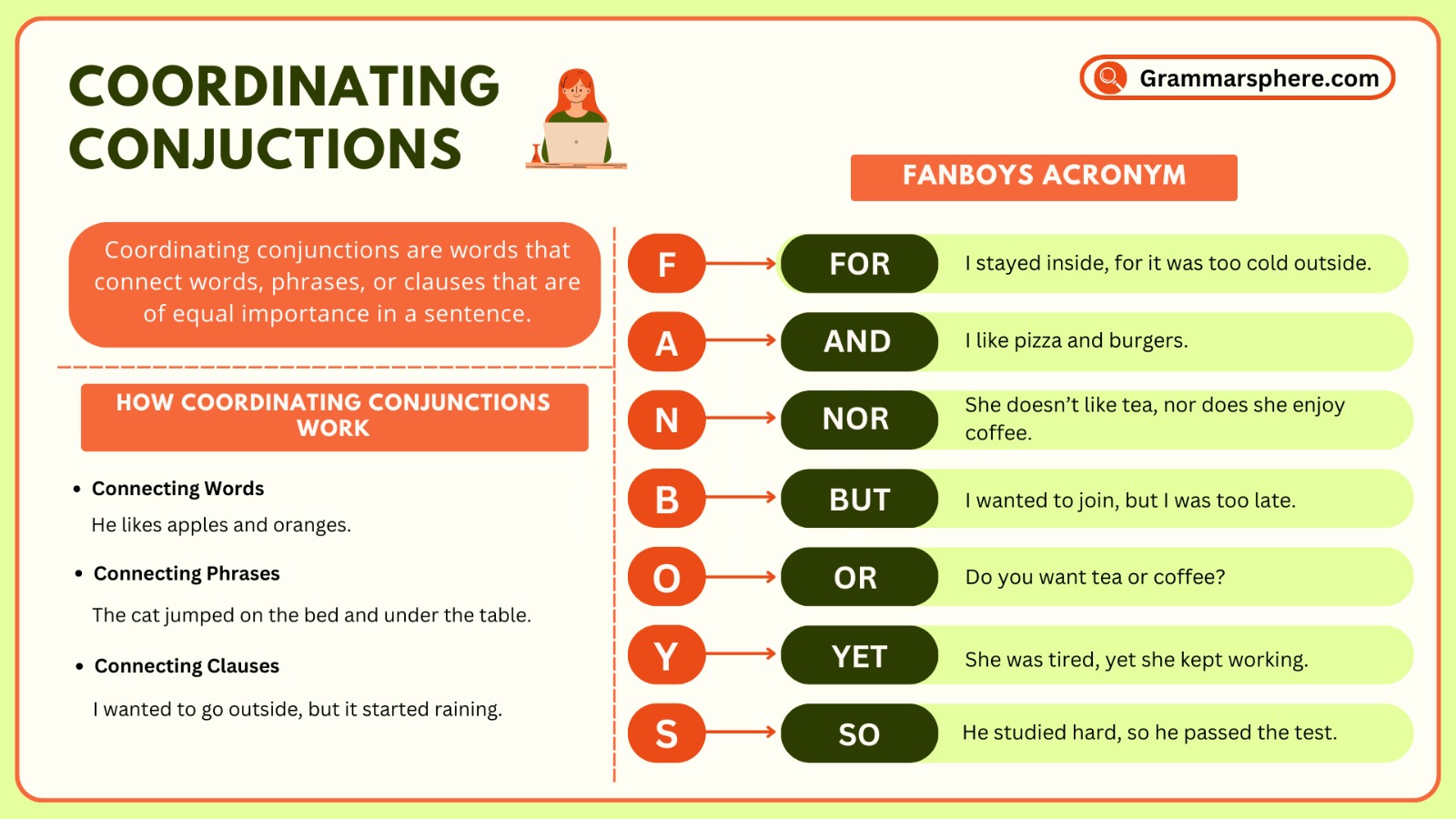


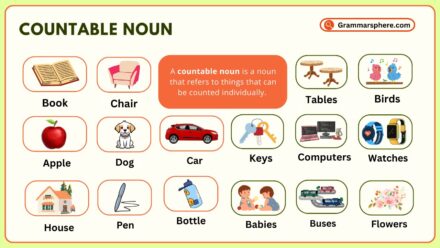
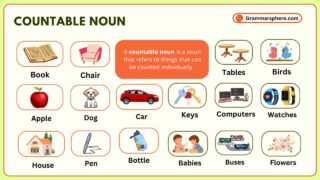
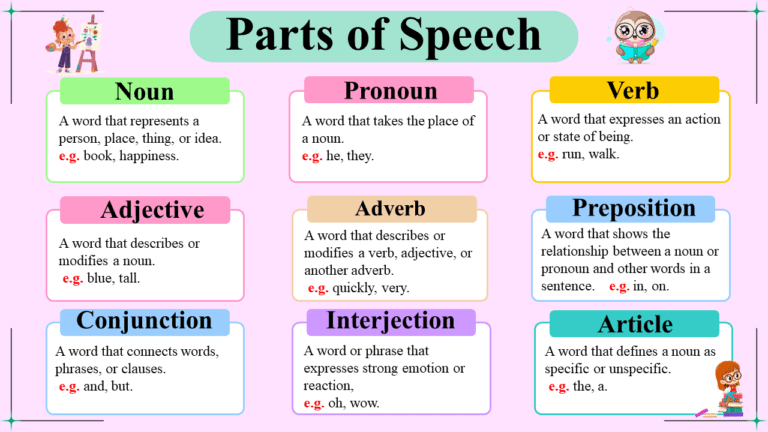
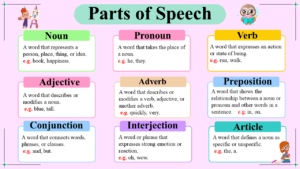
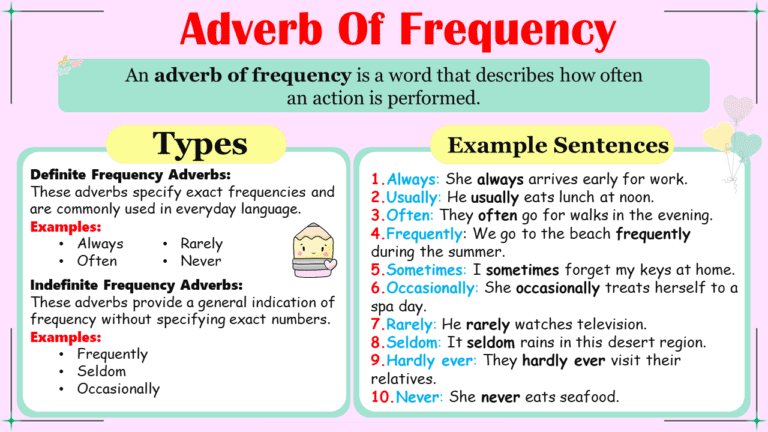
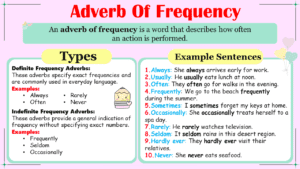
Leave a Comment